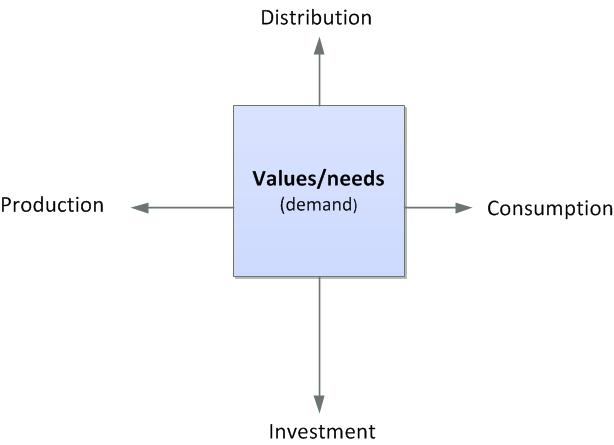We are all motivated by physical, emotional, social and other needs. The meaning and weight we give to them, especially in the context of the larger world, our experiences, education, culture, economic and social status and other factors, ultimately shape the values we identify to help guide our decisions and commitments, our behavior and goals. Sometimes those values conflict, competing for attention and expression.
- Values are at the heart of production/consumption cycles, from the personal and household level to the national and global level. At the stage of investment, directing resources to address particular needs, values guide decisions about what and whose needs are a priority, as well as evaluation of the options, risks, benefits and impacts.
- At the stage of production, values guide the creative and managerial processes of bringing together materials, energy, people, ideas, data and knowledge, time and money in developing the goods and services designed to meet a particular set of defined needs.
- In the distribution of those goods and services, values provide the criteria and motivations behind the decisions and methods chosen and used in packaging and transporting those goods and services to and from the wholesalers and retailers, in arranging trade deals and relationships, in developing the pricing and marketing strategies, in designing the advertising campaigns and in selling the final product/service to the ultimate customer.
- Finally, values play a critical role in the consumption phase, in the decision to buy or acquire a particular good or service, in assessing if it is really worth the price, not only the financial purchase price but in the actual benefits, risks, and impacts may be included in the transaction. While a particular food may be delicious it may also, for example, increase the odds of cancer and at the same time contribute to climate change. The value of the product and its use may also conflict with the value given to the environmental and health impacts when it is discarded into the waste stream. The values involved in consumption decisions and behavior can sometimes be overwhelming for consumers, organizations and institutions who ultimately want to do the right thing.

